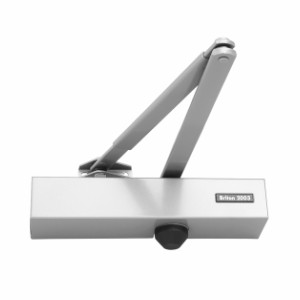How Long Do Door Closers Last?
When a door closer stops working in a commercial environment, this can lead to problems. You can start to experience temperature control issues, doors slamming in high winds or slower traffic being hit by the door, you can experience security issues if the doors aren’t closing properly and you can also be in contravention of fire safety regulations. This is why it is important that you select and install the correct door closer for your purposes, but also one that is built to last and will provide you with the service you need for the environment you are managing.
Factors which affect how long a door closer lasts
There is no single answer when considering how long a door closer lasts, because there are different types of door closer, different rates of usage and variable factors which can affect how the door closer performs. The following factors will influence how long a door closer lasts:
- Installation of a door closer – is the door closer mounted and secured properly?
- Selection of a door closer – is the door closer the correct size and design for the door and its location/environment?
- Maintenance for your door closer – has the door closer been looked after in terms of lubrication, adjusting the valves, cleaning, re-securing loose screws and repairing damage?
- Adjustments to your door closer – has the backcheck feature been used and if so, how hard is the door closer having to work? Of course the greater force required to close a door, the harder the door closer is working and the less time it is likely to last.
- Quality of your door closer – do you have a good quality door closer in the first place?
Understanding how long a door closer should last
When considering how long a door closer should last, we need to understand and categorise the different levels of usage in different commercial buildings. This will help us when selecting the right type of door closer for the right type of environment. Typically, usage of a door closer is split into three categories of low, medium and high:
- Low usage = up to 10,000 cycles per year – so this could be in a small office or store room that isn’t used very often, or in a commercial building with only a couple of people in it.
- Medium usage = between 10,000 and 100,000 cycles per year – this would be in a much busier working environment, such as a large open plan office, or in a commercial location where there are occasional spikes of high activity, such as a cinema or theatre, or an arena, event space or stadium.
- High usage = between 100,000 and 500,000 cycles per year – here we are looking at the top end of usage where door closers are working at high volume and with constant traffic, so hospitals, schools and shopping centres.
When door closers are designed and manufactured they are produced in line with strict product specifications. These product specifications include a ‘durability’ grade. So each different design of door closer is physically tested to establish how many opening and closing cycles it should be able to withstand under normal operating conditions, and assuming it has been installed correctly and is suitable for the location and environment. Once that figure has been established and included in the product specifications, operating procedures ensure each unit of that individual model is made to those specifications, with in-process and finished product checks ensuring standards and specifications are met.
So if, for example, you had a door closer that had been durability tested to 500,000 cycles, using the above usage figures we can see how it would fare, and how long it should last, in each different environment:
- In a low usage location: it could last more than 50 years (500,000 divided by 10,000 cycles), and therefore you would probably never need to replace it if you maintained it well.
- In a medium usage location: it could last between 50 years to 5 years – so this is where factors such as location selection and maintenance would have the most effect on the longevity of the door closer. You may also want to consider a more robust design for the door closer in some locations, ie. it has been durability tested to more than 500,000 cycles.
- In a high usage location: it could last between 5 years and 1 year – this is still a good performance level for a high traffic environment, and replacing a door closer more frequently in this situation is a cost you would readily expect and accept, but again, you could install a more robust door closer which would deal with high usage traffic for longer.
In summary, when selecting a door closer there are many variables to consider which can affect how long a door closer should typically last. Most importantly you should check the specifications of an individual door closer and establish how many cycles it has been durability tested for. While you would not be expected to know a figure for how many opening/closing cycles your door goes through in a year, you can make a reasonable judgement based on the usage categories included here, and also take into consideration the factors which influence how long a door closer lasts. This should help you in selecting the right door closer for your location and achieving the best possible performance from it.